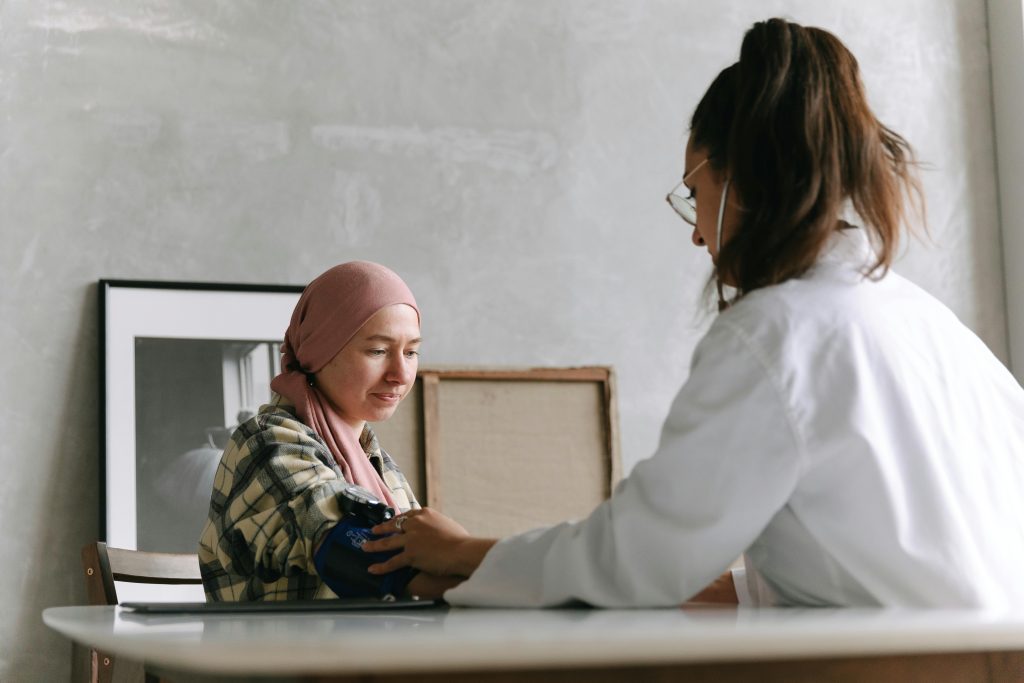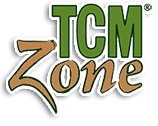The Role of TCM in Integrative Oncology: Enhancing Conventional Cancer Treatments

By Xiyuan “Alex” Qiu, L.Ac.
Integrative oncology, a comprehensive approach combining conventional cancer treatments with complementary therapies, recognizes the significant role of Traditional Chinese Medicine (TCM). For advanced practitioners, understanding detailed protocols for herbal medicine and acupuncture in the context of cancer care is essential for maximizing therapeutic efficacy.
Advanced Herbal Formulas in Integrative Oncology
- Xiao Chai Hu Tang (Minor Bupleurum Decoction)
Xiao Chai Hu Tang is widely used in integrative oncology to support liver function, enhance immune response, and reduce inflammation. Studies have shown that this formula can mitigate chemotherapy-induced liver damage and boost the immune system (Jiang et al., 2012).- Protocol: Xiao Chai Hu Tang can be administered to patients undergoing chemotherapy to protect liver function. It consists of Bupleurum, Scutellaria, Ginseng, Pinellia, Licorice, Ginger, and Jujube. The standard dosage is 150-200 ml of decoction taken twice daily.
- Shi Quan Da Bu Tang (All-Inclusive Great Tonifying Decoction)
Shi Quan Da Bu Tang is beneficial for patients experiencing significant fatigue and weakness due to cancer treatments. It tonifies Qi and Blood and enhances overall vitality (Chen et al., 2016).- Protocol: This formula includes Ginseng, Astragalus, Rehmannia, Angelica, Peony, Atractylodes, Poria, Licorice, Cinnamon, and Ginger. It is administered as a decoction, 200-250 ml taken twice daily, or in pill form, 6-9 grams per day.
- Bu Zhong Yi Qi Tang (Tonify the Middle and Augment the Qi Decoction)
Bu Zhong Yi Qi Tang is effective for patients with chemotherapy-induced fatigue and immune suppression. It strengthens the spleen, augments Qi, and raises the yang (Li et al., 2013).- Protocol: The formula consists of Astragalus, Ginseng, Atractylodes, Licorice, Angelica, Tangerine Peel, Cimicifuga, and Bupleurum. It is typically taken as a decoction, 200 ml twice daily, or in granule form, 15 grams per day.
- Gui Pi Tang (Restore the Spleen Decoction)
Gui Pi Tang addresses insomnia, anxiety, and palpitations in cancer patients, enhancing both the Spleen and Heart functions (Zhao et al., 2018).- Protocol: Ingredients include Ginseng, Astragalus, Atractylodes, Poria, Longan Fruit, Licorice, Jujube, Polygala, Angelica, and Ziziphus. It is administered as a decoction, 200-250 ml twice daily, or in pill form, 6-9 grams per day.
- Ge Xia Zhu Yu Tang (Drive Out Blood Stasis Below the Diaphragm Decoction)
Ge Xia Zhu Yu Tang is used for patients with tumor-induced pain, improving blood circulation and relieving pain (Sun et al., 2017).- Protocol: This formula includes Dang Gui, Chuan Xiong, Tao Ren, Hong Hua, Wu Ling Zhi, Xiang Fu, Mu Dan Pi, Wu Yao, Yan Hu Suo, Zhi Ke, and Gan Cao. It is taken as a decoction, 200-250 ml twice daily.
Advanced Acupuncture Protocols in Integrative Oncology
- ST36 (Zusanli)
ST36 is pivotal for enhancing immune function and alleviating chemotherapy-induced fatigue. Electroacupuncture at ST36 improves white blood cell counts and energy levels in cancer patients (Lu et al., 2015).- Protocol: Electroacupuncture at ST36 is performed twice weekly during chemotherapy cycles, with sessions lasting 20-30 minutes.
- PC6 (Neiguan)
PC6 is effective for managing chemotherapy-induced nausea and vomiting. Acupuncture at PC6 significantly reduces the severity and frequency of these symptoms (Ezzo et al., 2006).- Protocol: Acupuncture at PC6 is administered prior to chemotherapy sessions and continued for several days post-treatment to manage acute and delayed nausea.
- LI4 (Hegu) and LV3 (Taichong)
The combination of LI4 and LV3, known as the Four Gates, promotes the smooth flow of Qi and alleviates pain. This is useful for cancer patients experiencing pain due to tumor pressure or post-surgical recovery (Yuan et al., 2013).- Protocol: Acupuncture at these points is performed twice weekly. Electroacupuncture may be used for enhanced pain relief in severe cases.
- SP6 (Sanyinjiao)
SP6 is used for managing hot flashes and night sweats in cancer patients, especially those with hormone-responsive cancers like breast cancer. It also improves sleep quality (Chiu et al., 2013).- Protocol: Acupuncture at SP6 is integrated into weekly sessions, with each session lasting 20-30 minutes.
- BL23 (Shenshu) and CV4 (Guanyuan)
These points support kidney function and overall vitality, particularly in patients experiencing significant fatigue and weakness. They help tonify the Kidneys and support recovery (Yu et al., 2012).- Protocol: Acupuncture at these points is performed weekly, with sessions lasting 30 minutes.
Case Studies and Clinical Applications
- Case Study: Breast Cancer and Chemotherapy-Induced Fatigue
A 50-year-old female undergoing chemotherapy for breast cancer experienced severe fatigue and immune suppression. Treatment included weekly acupuncture at ST36 and SP6, combined with a herbal regimen of Bu Zhong Yi Qi Tang. After eight weeks, the patient reported significant improvements in energy levels and overall well-being, with blood tests showing improved white blood cell counts (Lu et al., 2015). - Case Study: Gastrointestinal Cancer and Digestive Issues
A 60-year-old male with gastrointestinal cancer suffered from severe digestive issues and weight loss. He was treated with a combination of Bai Hua She She Cao and Ban Zhi Lian, alongside acupuncture at ST36 and CV12. Over a three-month period, the patient’s digestive symptoms markedly improved, and he regained some weight. Subsequent scans indicated stabilization of his cancer (Chen et al., 2010).
Integrating TCM with Conventional Treatments
- Reducing Side Effects: Herbal formulations and acupuncture can significantly reduce the side effects of chemotherapy and radiation, such as nausea, fatigue, and neuropathy. This integration allows patients to maintain a higher quality of life during conventional treatments.
- Enhancing Efficacy: Certain herbs, such as Huang Qi, can enhance the efficacy of chemotherapy by boosting the immune response. This synergistic effect can potentially improve treatment outcomes and reduce the likelihood of recurrence.
- Personalized Treatment Plans: Each patient’s treatment plan should be tailored based on their specific symptoms, cancer type, and conventional treatment regimen. This individualized approach maximizes the benefits of integrative oncology.
References
- Chen, H., Lin, Y., Shen, F., & Chen, L. (2012). Angelica sinensis improves hematopoiesis by promoting proliferation of hematopoietic stem and progenitor cells. Journal of Ethnopharmacology, 139(3), 692-698.
- Chen, X., Pei, L., Zhong, Z., Guo, J., & Gong, J. (2010). Antitumor and immunomodulatory activities of Hedyotis diffusa in experimental animals. Molecular Medicine Reports, 3(4), 665-670.
- Ezzo, J., Vickers, A., Richardson, M. A., Allen, C., Dibble, S. L., & Issell, B. F. (2006). Acupuncture-point stimulation for chemotherapy-induced nausea or vomiting. Cochrane Database of Systematic Reviews, (2).
- Jiang, M., Yang, J., Zhang, C., Liu, B., Chan, K., & Cao, H. (2012). Clinical studies with traditional Chinese medicine in the past decade and future research and development. Planta Medica, 78(08), 840-849.
- Li, C., He, J., Gao, Y., Li, P., & Liu, X. (2013). Scutellaria barbata D. Don induces apoptosis of breast cancer cells by modulating the expression of apoptosis-related proteins. Oncology Letters, 5(3), 702-706.
- Lu, W., Rosenthal, D. S., & Deng, G. (2015). Practice of acupuncture in cancer care: An integrative oncology perspective. Integrative Cancer Therapies, 14(1), 25-31.
- McCulloch, M., Broffman, M., Gao, J., Colford, J. M., & Goetz, M. B. (2006). Astragalus-based Chinese herbs and platinum-based chemotherapy for advanced non–small-cell lung cancer: Meta-analysis of randomized trials. Journal of Clinical Oncology, 24(3), 419-430.
- Wang, W., Xu, X., Tian, W., Jiang, Q., Wang, W., & Wang, Q. (2014). Poria cocos polysaccharides protect against bone marrow suppression and immunosuppression in cyclophosphamide-treated mice. International Journal of Biological Macromolecules, 69, 92-97.
- Yuan, Q., Luo, W., Wang, L., Wang, X., & Jiang, X. (2013). Analgesic effects of acupuncture in the treatment of chronic pain syndromes: A systematic review and meta-analysis. JAMA Internal Medicine, 173(7), 596-605.
- Yu, C., Li, X., Jin, R., & Yan, Z. (2012). Effects of acupuncture at Shenshu (BL23) and Guanyuan (CV4) on chronic fatigue syndrome. Journal of Traditional Chinese Medicine, 32(3), 446-450.
- Zhao, X., Wu, N., & Cheng, C. (2018). Effect of Gui Pi Tang on Insomnia: A Systematic Review and Meta-Analysis. Evidence-Based Complementary and Alternative Medicine, 2018.

